Night of Ganghwa & Heritage Story (강화 문화재 야행)
465.4035199314196m 368 2021-09-15
Gwancheong-ri. Ganghwa-gun, Incheon
• 1330 Travel Hotline: +82-2-1330 (Korean, English, Japanese, Chinese) • For more info: +82-32-930-3569
Night of Ganghwa & Heritage Story takes place in the city of Ganghwa. There will be a media facade on cultural heritage sites for online viewers as well as a guided tour on bikes for offline visitors.
Yongheunggung Palace (용흥궁)
471.14034986169634m 17823 2022-07-27
16-1, Dongmunan-gil 21beon-gil, Ganghwa-gun, Incheon
+82-32-930-3515
Yongheunggung Palace is where King Cheoljong (r. 1849-1863) used to live before his ascension to throne. The chief of Ganghwa County, Jeong Gi-se, enlarged the original residence and named it Yongheunggung (meaning palace of the rising dragon) in the 4th year of King Cheoljong’s reign. Its architectural features include a paljak (traditional Korean half-hipped roof) and supporting columns rendered in Jusimpo style, the column brackets placed only on top of the columns. The palace was built in the tradition of dwelling houses such as the Yeongyeongdang and Nakseonjae houses in Changdeokgung Palace, so the palace buildings give off a simple and plain atmosphere. Within the precincts of the palace are a memorial stone and a monument house indicating that the palace used to be the old home of King Cheoljong.
Daemyeongheon House [Korea Quality] / 남문한옥 대명헌 [한국관광 품질인증/Korea Quality]
471.2427905306565m 0 2021-03-25
7, Nammunan-gil, Ganghwa-gun, Incheon
Daemyeongheon House is a modern hanok building integrating elements of European architecture. Its interior features design that cannot be found in traditional hanok, such as English herringbone-style floorboards and stained glasses. The kitchen has a well-preserved domestic furnace and items in the style of 1930s, exemplifying the unique atmosphere of this modern hanok. Daemyeongheon is also famous for its connection to Kim Gu (pen-name: Baekbeom), a prominent independence activist: When Kim fled to Ganghwado Island about a hundred years ago, Daemyeongheon was the place he stayed for about three months, and also a place where he presided over a village school. Traces of Kim’s stay can still be found in the building.
Daemyeongheon House is made up of three buildings of the main building, a detached building, and an annex. The area that the guests stay in is the annex. The annex has three rooms, a central wooden-floored hall (daecheong), raised floor (numaru), balcony (jjongmaru), and kitchen. The restroom, which is also fitted with a shower booth, is located outside the building. Since reservations are offered to only one group per day, visitors have the house to themselves during their stay. Because of the building’s unique characteristics, guests are prohibited from cooking indoors; instead, guests are provided with a complimentary breakfast, such as bread, tea, coffee, and fruit.
Paid programs on site include tea ceremony, azalea craft on traditional Korean paper, retro-style clothing rental, and photography. Guided tours are offered twice per day at 14:00 and 16:00. The tour takes about 0.5–1 hr and requires a fee of KRW 10,000 (including tea). However, visitors should check the date before their visit, as the guided tour is not available when there are any guests staying in the house.
Ganghwa Anglican Church (대한성공회 강화성당)
529.4894088314607m 33711 2020-04-18
10, Gwancheong-gil 27beon-gil, Ganghwa-gun, Incheon
+82-32-930-4571
Ganghwa Anglican Church was consecrated in 1900 by Charies Jone Corfe, the First Bishop of the Church as the St. Peter and St.Paul’s Church. The church has since undergone several restorations, but the design remains true to the original.
The two-story 4x10 rectangular building is characterized by traditional Korean construction style on the outside while the interior is a Western Basilica style symbolizing the beauty of harmony and Korean tradition. It was first designated as Gyeonggi-do Tangible Cultural Property No. 154 and then became Incheon Tangible Cultural property when Ganghwa was included in Incheon Metropolitan City. In January 2001 it was designated as Historic Site No.424 of Korea.
Goryeogung Palace Site (고려궁지)
607.3019624877228m 32458 2021-06-01
394, Ganghwa-daero, Ganghwa-gun, Incheon
+82-32-930-7078
Goryeogung Palace Site on Ganghwado Island is the site of the royal palace where the people of the Goryeo dynasty (918-1392) resisted the Mongolian invasion for 39 years. In the 19th year of his reign, King Gojong moved the capital to Ganghwa on account of its natural and strategic advantages. During the Byeongjahoran (Chinese invasion of Korea) in 1637, the palace was lost by force to the Qing dynasty of China. Later, Joseon Dynasty palace building and Ganghwa Yusubu (Ganghwa governor’s office) buildings existed in the Goryeo palace site but were destroyed by the French army during the Byeonginyangyo (French Campaign against Korea). Nowadays, the only structures that remain are the Dongheon main office (built in 1638) and Ibangcheong administration office (built in 1654). The palace and its subsidiary buildings were restored in 1977. It has historical lessons of the spirit of independence and overcoming national crisis.
Ganghwado Island (강화도)
609.2758887621247m 63315 2023-03-24
Ganghwa-daero, Ganghwa-gun, Incheon
+82-32-934-7500
Ganghwado Island, off the west coast, is the fifth largest island in Korea. The island was connected to the mainland in 1970 with the construction of the Ganghwagyo Bridge. Another larger bridge, Ganghwadaegyo Bridge, was built in 1997, making it easier than ever to travel to Ganghwado Island from Seoul and Incheon areas. The island is home to Chamseongdan Altar on top of Manisan Mountain on the southern coast. This is said to be where Dangun Wanggeom offered sacrificial rites to the heavens. Another important item of note on Ganghwado Island is the collection of stone dolmens, a UNESCO-recognized world heritage.
Ganghwado Island has many famous local products, including the medicinally effective Ganghwa ginseng and hwamunseok, a mat woven with flower patterns. Hwamunseok is famous also as a representative traditional Korean product for its intricate handwork and designs.
Ganghwahyanggyo Confucian School (강화향교)
794.2153329677984m 22552 2020-06-29
58, Hyanggyo-gil, Ganghwa-gun, Incheon
+82-32-930-4571
First established in Ganghwa-eup during the 5th year of King Injong in the Goryeo dynasty (1127), Ganghwahyanggyo Confucian School was moved to Ganghwa-gun and then restored at the foot of Buksan Mountain (formally Songaksan Mountain) in 1624 by Sim Yeol during the 2nd year of King Injo.
Ganghwahyanggyo Confucian School is regarded as an important cultural and historical site in Ganghwa-eup.
Ganghwasanseong Fortress (강화산성)
1.1 Km 13509 2020-03-16
San 3, Gukhwa-ri, Ganghwa-gun, Incheon
+82-32-930-5464
Ganghwasanseong Fortress was originally earthen mountain walls, built during King Go Jong’s 19th year of reign (1232), after he moved to Ganghwado. It was built to repel attacks from the Mongols. The inner castle was destroyed when the capital was moved to another place, and at the beginning of the Joseon Era (1392-1910) the wall was again rebuilt with mud.
It went through much restoration until finally being rebuilt with stones. Ganghwasanseong Fortress originally had interior and exterior walls, but only the interior wall remains today. It has an approximate circumference of 1.2km. The exterior mud wall was approximately 9km in circumference with 8 gates. The huge exterior wall was built along the side of the east channel of Ganghwa, but no longer exists today. From 1977, the interior wall has been rebuilt many times over, but the east side of this wall has yet to be reconstructed.
There were four main gates in the wall. To the south, Anparu; to the east, Cheomhwaru; to the west, Manghanru; and to the north, Jinsongru. At the west gate, the historic Yeonmudang still remains. This area was where the soldiers used to train, and was also the place where the Korea-Japan Treaty of Peace and Amity (or Treaty of Ganghwa Island) was signed in 1876.
With its aching history
left behind and beautiful scenery, Ganghwasanseong Fortress serves as an ideal place for a brisk walk or refreshing drive.
Ganghwa Ginseng Center (강화 인삼센터)
1.2 Km 37797 2021-05-07
335, Ganghwa-daero, Ganghwa-gun, Incheon
+82-10-9314-3348
The cultivation of Ganghwa ginseng began during the era of King Gojong (A.D. 1232) of the Goryeo dynasty. In 1920, Ganghwado Island was designated a special district for ginseng cultivation. At the onset of the Korean War (1950-1953), the people of Gaeseong, the birthplace of ginseng cultivation, took refuge on Ganghwado Island and began to cultivate ginseng on a large scale, which was the beginning of the production of the famous 6-year-old root of ginseng.
Ganghwado Island has the optimal environment for ginseng cultivation with clay soil, sandy loam, and a cool climate condition influenced by coastal winds. The thick root of Ganghwa ginseng does not have any inside cavity or white interior. This is how Ganghwa became a leading producer of the 6-year-old root, which has a high rate of red ginseng extract, cheonji.
Ganghwa Ginseng Center handles quality ginseng guaranteed in its cultivation, processing, and distribution, owing to the utmost care exerted to provide safe and reliable products.
Ganghwa Seonwonsa Temple Site (강화 선원사지)
3.3 Km 12516 2022-09-19
222, Seonwonsaji-ro, Ganghwa-gun, Incheon
+82-32-933-8234
Ganghwa Seonwonsa Temple Site was first discovered in 1976 during a surface examination around Ganghwado Island undertaken by the Ganghwado Island Academic Research Team of Dongguk University. The site was designated as Historic Site No. 259 in 1977. Seonwonsa Temple was built by General Choi Wu in 1245 (the 32nd year of King Gojong’s reign during the Goryeo dynasty), which was right after the transfer of the capital to Ganghwado during resistance against the Mongolian invasion.
The temple was meant to be a spiritual mainstay in fighting against Mongolia. It used to be one of the two largest temples in Korea along with Songgwangsa Temple. However, the temple was completely destroyed during the early Joseon era, leaving only the site itself. The famous wood blocks of Palman Daejanggyeong (the Tripitaka Koreana), currently housed in Haeinsa Temple at Hapcheon, are said to have been originally stored in Seonwonsa Temple. It is believed that the carved wood blocks were taken from Seonwonsa to Heungcheonsa Temple during the Joseon era and again moved to Haeinsa Temple during the reign of Sejo.
Located on a mountain slope, the presumed location of the building site extends 250 meters from south to north and 170 meters from east to west.
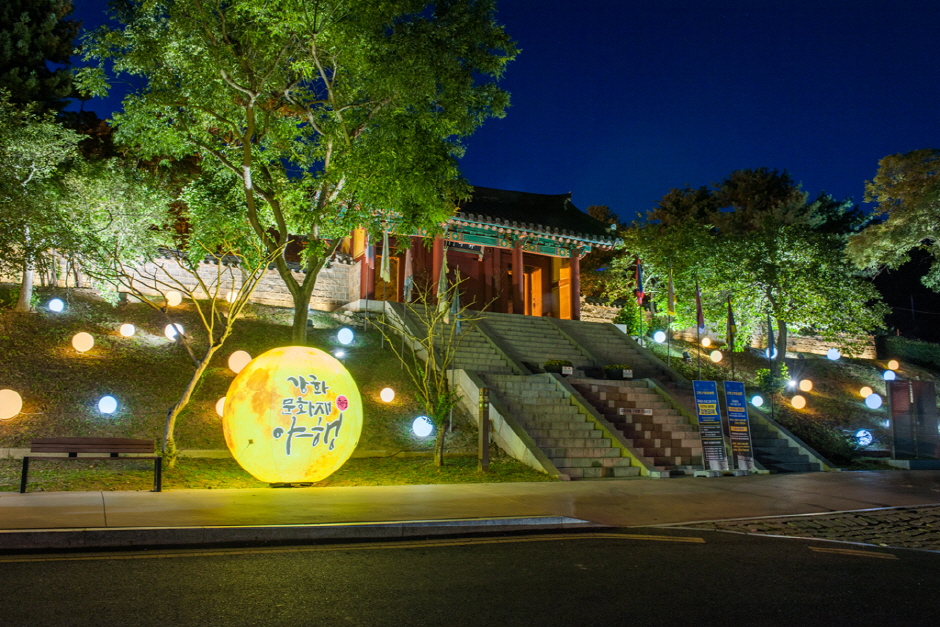
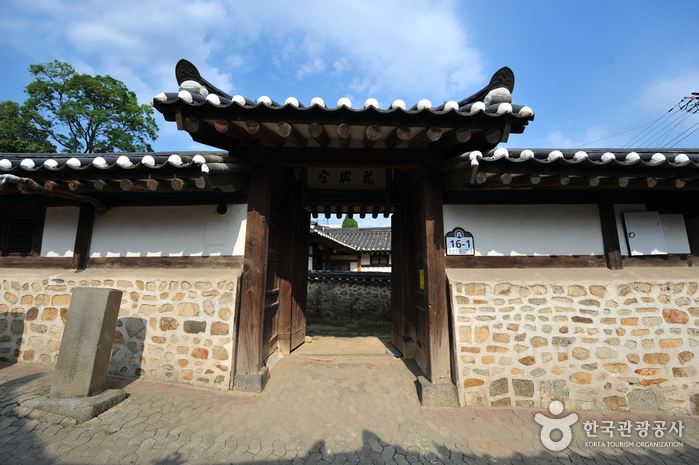
![Daemyeongheon House [Korea Quality] / 남문한옥 대명헌 [한국관광 품질인증/Korea Quality]](http://tong.visitkorea.or.kr/cms/resource/12/2707012_image2_1.jpg)
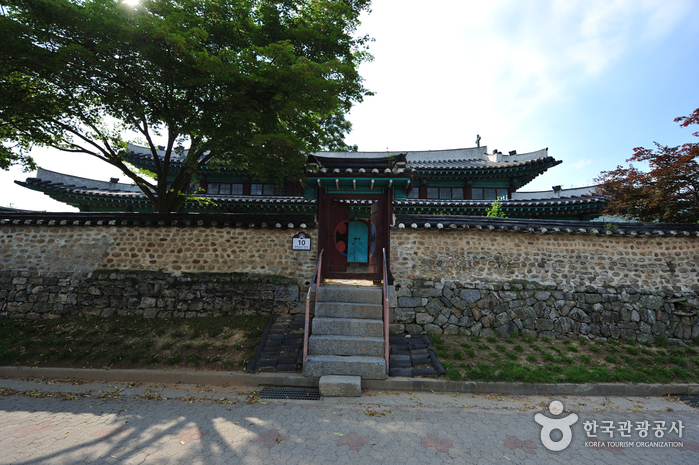
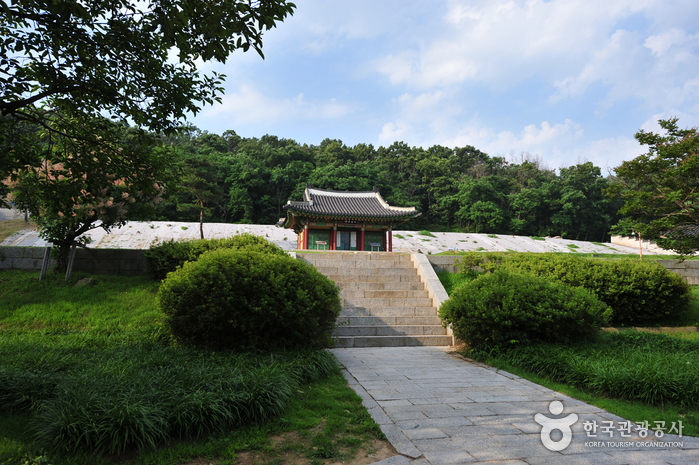
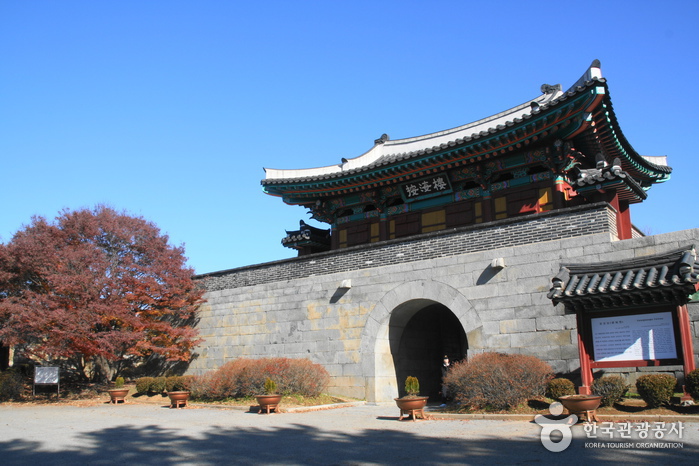
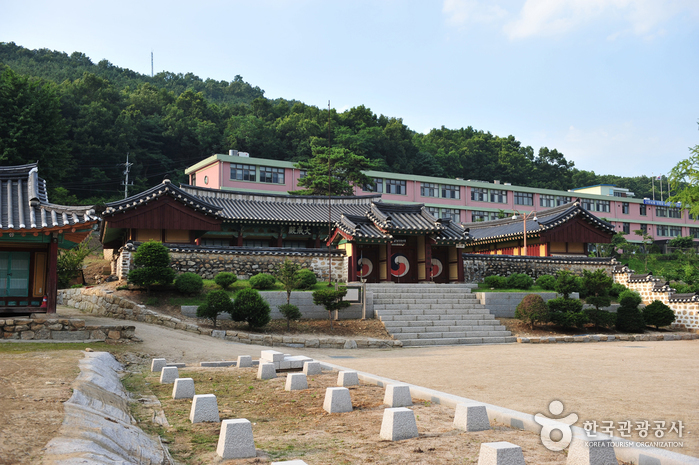
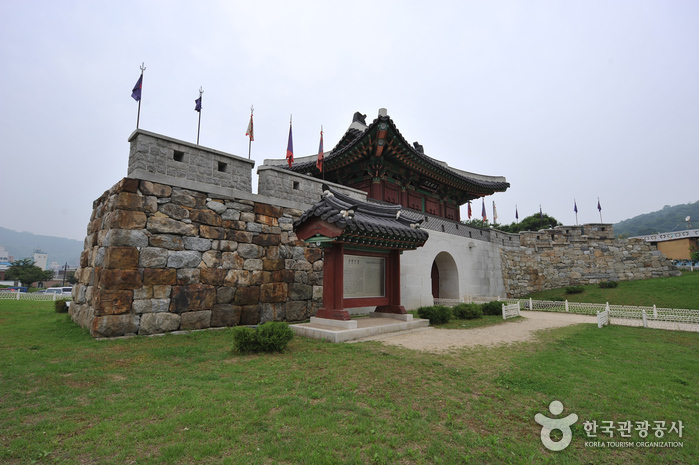
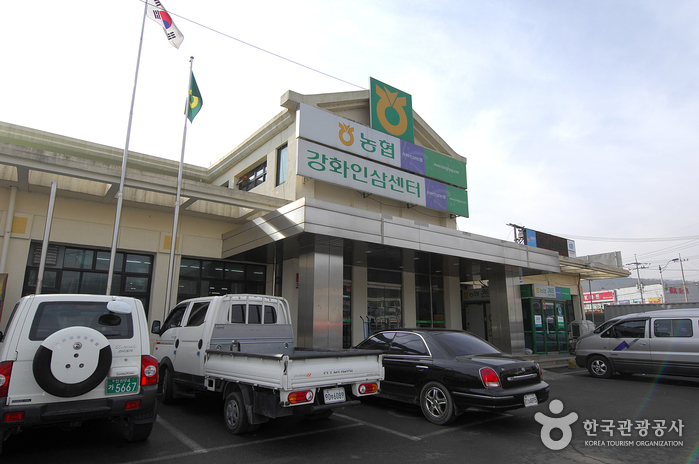
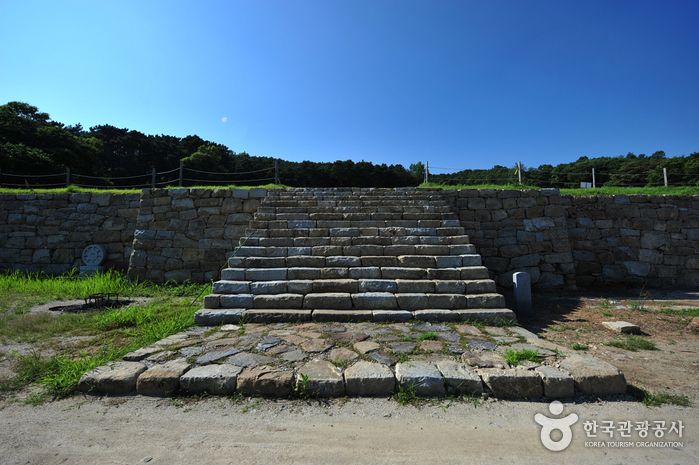
 English
English
 한국어
한국어 日本語
日本語 中文(简体)
中文(简体) Deutsch
Deutsch Français
Français Español
Español Русский
Русский